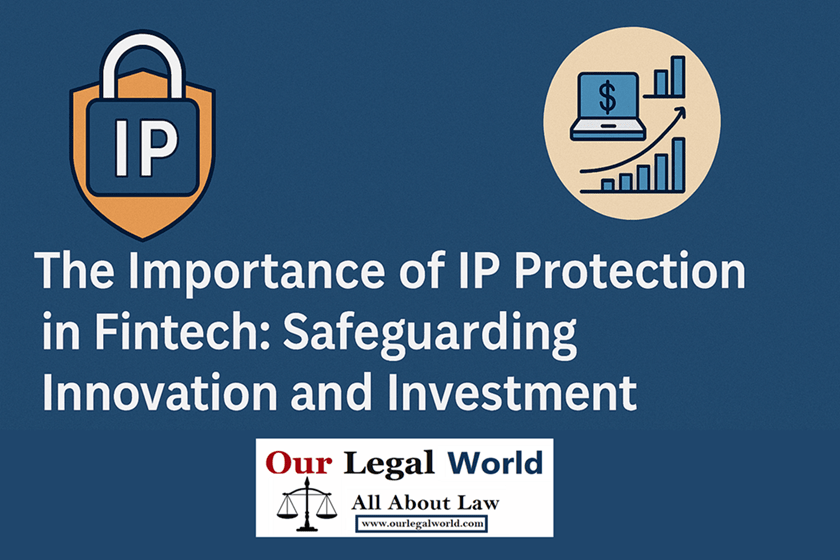THE SIGNIFICANCE OF INTELLECTUAL PROPERTY RIGHTS IN OTT PLATFORMS
INTRODUCTION
As we continue to cope with the epidemic, trapped at home due to rapid virus spread or lockdowns, binge-watching your favourite TV series on Netflix may be the sole source of relief. Most of us, on the other hand, may be guilty of downloading the series via a Telegram bot, Google Drive links, or other websites that give these episodes for free, knowing full well that they are infringing copies of the series, regardless of the OTT platform from which they were obtained. With the advancement of technology and the introduction of the internet, the problem of copyright infringement has grown exponentially. Due to the high demand for such free content, online viewers now have more chances to access pirated versions of content originally owned by OTT media firms. This article will look at how the use of free video content on premium video services like Netflix, Hulu, and Amazon Prime can lead to copyright infringement.
INTELLECTUAL PROPERTY IN THE DIGITAL WORLD
For quite some time, the ever-adapting idea of intellectual property has had its presence over the internet protocol and has been successful in adjusting the law to suit the online community. Because corporate assets are increasingly mirrored in terms of intellect rather than materiality, intellectual property has been able to make such a difference in the digital environment. With the rapid expansion of the internet in our lives, concerns about intellectual property rights and their protection are becoming more prevalent. The internet began as a scientific and social experiment, but it has since evolved into a commercial network where new business models are always being developed in order to provide new ways of delivering services to consumers. As a result, even while the nature of the rights stays consistent in restricting the exploitation of a person’s creativity and innovation, this trip is nothing short of revolutionary. The manner in which these rights are communicated and exchanged is continually changing in response to technological advancements. Telephones, phonograms, televisions, broadcasting and cable networks, satellite communications, recorders, compact discs, and the internet are all examples of communication technology that have had a significant impact on intellectual property law.
OTT PLATFORMS
OTT stands for “Over the Top” and refers to any streaming service that delivers content over the internet. The service is delivered “over the top” of another platform. Because OTT is a relatively new phenomenon, there is a lot of room for expansion. Many companies are entering the OTT industry, resulting in a plethora of options for consumers and an increase in ad inventory for marketers. As more individuals cut the cord and go to online-only media consumption, OTT services will become an increasingly important means to reach these customers. It remains to be seen how marketers can take advantage of these sites.
BENEFITS OF OTT PLATFORMS
Anyone with a subscription can access high-quality information at any time and from any location. OTT Platforms also have a slew of other advantages. OTT Platforms and enterprises have exploded in popularity during pandemics, playing a critical part in the growth of the information revolution. Netflix, Amazon Prime, Hot star, and Hulu are some of the most popular OTT platforms. People are subscribing to streaming services in greater numbers as their need for on-demand entertainment grows. The accessibility Ott content is widely accessed, all you need is an internet connection and compatible hardware devices such as mobile phones, tablets, personal computers, smart tv etc. By serving as one of the primary sources of entertainment during these difficult pandemic times, OTT platforms have made a significant contribution. Almost all streaming services provide free trials, which consumers are taking advantage of Customer retention, on the other hand, is the true litmus test for these platforms. This may be accomplished not only through high-quality material but also through cutting-edge technology like Netflix. OTT providers must examine all phases of the OTT subscriber’s lifecycle in order to give users a seamless content viewing experience. The discovery and dissemination of material is the initial step in that direction. Further, AI and machine learning will assist in personalizing the search experience by analyzing client behaviour and recommending the appropriate information at the appropriate moment.
Also Read: Zydus Wellness Products Limited vs Dabur India Limited: Case Brief
OTT REVOLUTION DURING THE PANDEMIC
Platforms like Netflix and Amazon Prime have transformed the entertainment sector, particularly during pandemics when people are unable to access traditional forms of entertainment such as theatres and live performances. In recent years, OTT platforms have become increasingly popular in the entertainment business. Any content supplied via the Internet that is not from a typical television (cable) or satellite distributor is referred to as OTT, or over-the-top.
Cable and satellite providers frequently provide bundled channel packages and then charge customers for them. Users who utilise an OTT service can subscribe to and pay for individual channels that they want to watch. This means that if a customer wants to, they can get rid of all of their cable or satellite provider’s channels using an OTT service. This type of content provides more visibility and information to OTT platforms, allowing them to enjoy larger economic benefits from content and negotiate better prices. Platform providers must prioritise the security of OTT content to guarantee that their users have a secure and pleasurable experience. Video content creation takes a lot of time and effort, and exposure to piracy or abuse of video content can violate licencing agreements and have a significant impact on revenue generated from Intellectual Property. Because most streaming platforms require users to pay to see content, there is a way to distribute pirated videos for free on the Internet. Peer-to-peer piracy has resulted, allowing users to disseminate and share unlawfully obtained digital media. Copyrighted content from various OTT platforms is sometimes shared and distributed via software tools designed for other purposes. For laypeople or content providers, the concepts of copyright and intellectual property rights are somewhat vague.
OTT VIDEO PIRACY ISSUES
The ongoing desire of online viewers to obtain free access to premium OTT material in the form of movies and web series has resulted in a growth in online video piracy. The tremendous demand for such free content has resulted in a myriad of ways for online viewers to obtain a pirated version of the content that was originally owned by OTT media firms. To give an example, Telegram, a cloud-based instant messaging and voice-over IP service located in Dubai, is a popular site for users to distribute pirated content like movies and web series that are generally available on OTT platforms such as Netflix, Amazon Prime Video, Hot star, and others. Peer-to-peer piracy has risen as a result, allowing users to distribute and share illegally obtained digital media. This rise hurts such platforms and content providers because it eliminates a significant portion of their potential earnings. Because the criminals are difficult to track, the cost of unlawful distribution is low, and it is impossible to analyse and monitor the number of people that access pirated information, regulating this illicit activity becomes tough. The development of Virtual Private Networks (VPNs) exacerbates the tracing problem by allowing people to access their desired content without their internet activity being traced back to their IP address. Even if an individual is found guilty of video piracy of OTT content, adjudicating the matter may be challenging due to the involvement of multiple nations and the difficulty in determining jurisdiction. Another issue is that a number of persons may be involved in the process of copying and reproducing content from numerous platforms to making the pirated version available to the general public, making it impossible to identify the perpetrator and assign blame for the crime.
HOW INTELLECTUAL PROPERTY RIGHTS IN OTT PLATFORMS
Many of the companies available on the internet have massive databases that are protected by intellectual property rights. The intellectual property of original material in internet streaming services is essentially controlled by these platforms, which allows for future licensing and monetization prospects. The copyright law, in particular, aims to achieve the goal of giving the original creation to its creators, and the public must derive their right to information. This is because the internet can be viewed as a medium with no borders, making copyright infringement a very simple task.
Copyrights trademarks and licenses must all be addressed in order for content to be considered safe from the question of ownership. Copyright protection refers to the safeguarding of original works of authorship that are imprinted on a tangible medium. Branding and names that are indicative of a certain product or service are trademarked. There are different elements to look into when it comes to streaming services. These include text, music, video, publicity rights, and so on. A new media license or a video syncing license would be required, as well as the right to the publicity of those who appear in the content. People prefer to obtain material from OTT service providers since it is free, as opposed to network operators, who charge a significant fee. This industry is also less controlled than traditional media such as movies and television. This allows for more innovative content generation and allows these platforms to appeal to a broader audience. These advantages, together with the ease of accessing these platforms at any time and from any location, are the fundamental reasons for their appeal.
The most appealing aspect of the platforms is their ease of use, which is touted as a win-win situation for subscribers. Telecom providers have been unable to absorb this shift in market revenue, while newcomers’ over-the-top strategy has benefited from digital content and marketing. The broadcasters are the ones who order the production of the show. When a contract is signed between the broadcaster and the producers, the broadcaster pays a set fee, and the channel owns the IPR for the content and has the licensing rights to broadcast it in various languages, trade it off to international markets, airlines, or any other content acquiring platforms, as well as their own OTT platforms. Previously, the producers had a limited income because they were unable to monetize the increased reach and revenue. Furthermore, no one used to possess any IPR, which further limited revenue opportunities.
HOW IS IT ENFORCED?
The Copyright Act defines a direct infringement of OTT content as a copyright infringement. Under Section 2 (m), the Act specifies an infringing copy, clarifies the meaning of the right, and grants exclusive rights to the work’s creator. For practically all applicable content on OTT platforms, Sections 26, 27, and 29 of the Copyright Act of 1957 define the term for which such copyright continues to be 60 years. When content is given on a platform that could result in civil and criminal liability under Section 51 of the Act, which considers illegal reproduction or deliberate storing of the work as infringement, it is considered a direct infringement by an OTT service provider. Furthermore, the Act includes technological safeguards for copyright protection. Furthermore, when read in conjunction with the Intermediary Rules of 2011, the Information Technology Act of 2000 considers the unauthorized distribution of copyrighted content to be an offence and places responsibility on intermediaries to ensure that no infringing content is posted on their platforms. According to the draught Information Technology [Intermediaries Guidelines (Amendment) Rules] 2018, these platforms must develop technology-based solutions to detect and prevent infringements. But what happens if an unauthorized duplicate is discovered on any platform? Cease and Desist notices frequently work, causing the intermediaries to remove the offending information from their or affiliated websites. Platforms like Telegram, on the other hand, frequently make it much more difficult to detect infringements in the first place. Courts have devised effective ways to detect such websites and ban them from offering or making available pirated copies by issuing dynamic injunctions or John Doe orders that restrict not just the recognized websites, but also unidentified infringers and middlemen. In the case of Taj Television & Anr v Rajan Mandal & Ors. for example, a John Doe order was given for the protection of intellectual property. Courts can grant temporary injunctions under the Civil Procedure Code and the Specific Reliefs Act. In this regard, dynamic orders to combat infringements have provided major relief to the media and broadcasting businesses, as well as rights holders. Dynamic, legitimate online platforms that fit under the concept of intermediaries and enjoy legal immunity must prevent the criteria specified by courts to detect pirate websites. The US Supreme Court once utilized a ‘Doctrine of Inducement’ against a platform, holding the platform accountable for allowing the peer-to-peer distribution of copyrighted data. However, the bottom line is that India’s IP laws must be modernized to adapt to these new forms of infringement, as there is currently no definitive law on online copyright infringements, which has an impact on OTT platforms’ incentives and revenue generated from their work as long as their labour continues to get stolen.
NEW OTT PLATFORM REGULATIONS
OTT platforms assist in the commercialization of creative works. These platforms get unrestricted access to the Indian market for the material they provide. In India, digital media was largely unregulated, and content providers had an unrestricted creative license. Arguments against OTT platform censorship have been made numerous times. These platforms are subscription-based on-demand services, which allow users to pay for only the content they wish to watch. As the Indian public consumes more content via OTT platforms, several conflicts have arisen, and problems about obscenity and dignity have been raised. The Information Technology (Guidelines for Intermediaries and Digital Media Ethics Codes) Rules, 2021, was notified as a result of this. These rules establish recommendations for categorizing information based on a variety of characteristics. On February 25, 2021, the Ministry of Information and Broadcasting issued rules to address issues such as fake news, online safety, and legal parity.
CONCLUSION
Today, there are a plethora of OTT platforms to choose from. And each of those platforms has its own set of features and capabilities. And almost all of them are ideal for live events and streaming VoDs. When selecting an OTT platform for yourself, however, carefully consider your requirements and set aside a budget for it. This will assist you in making a more informed selection. In addition, we’ve provided you with some recommendations and features for selecting the finest OTT platform and monetizing your video content. The increasing demand for material on television and in digital media indicates that now is a good time to protect intellectual property rights, but the question is whether content creators are ready to take the risk. With the rising demand for material in digital media, keeping intellectual property rights is a smart decision, but it comes with a price tag. The growth of the OTT space across demographics necessitates a more attentive approach to intellectual property protection in order to withstand the growing frequency and intensity of cyber-attacks. As a result, customers, broadcasters, and, most crucially, OTT platform operators must choose the highest level of content security.
There is a need for collaboration between the government and OTT platform owners to develop a system that maintains the balance between creativity and regulation. The new guidelines should try to limit problematic information without robbing viewers of their ability to make more informed decisions. The rules should not act as roadblocks to the OTT industry’s growth.
This Blog is written by Sidhya Sasidharan, 4th year BBA. LL.B.(Hons) Student, Government Law College Thrissur, Kerala






![Tax Law Internship at Legum Attorney [Chamber of Ashish Panday], Delhi : Apply by 15th May 2025](https://www.ourlegalworld.com/wp-content/uploads/2025/05/IMG_0113-min.png)

